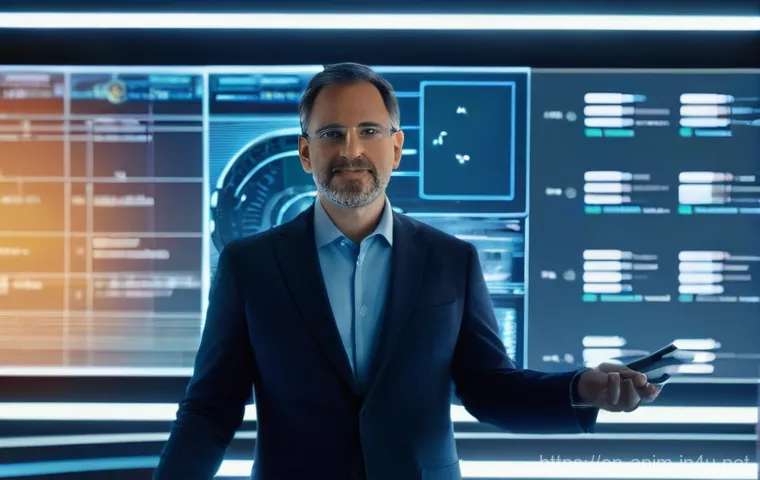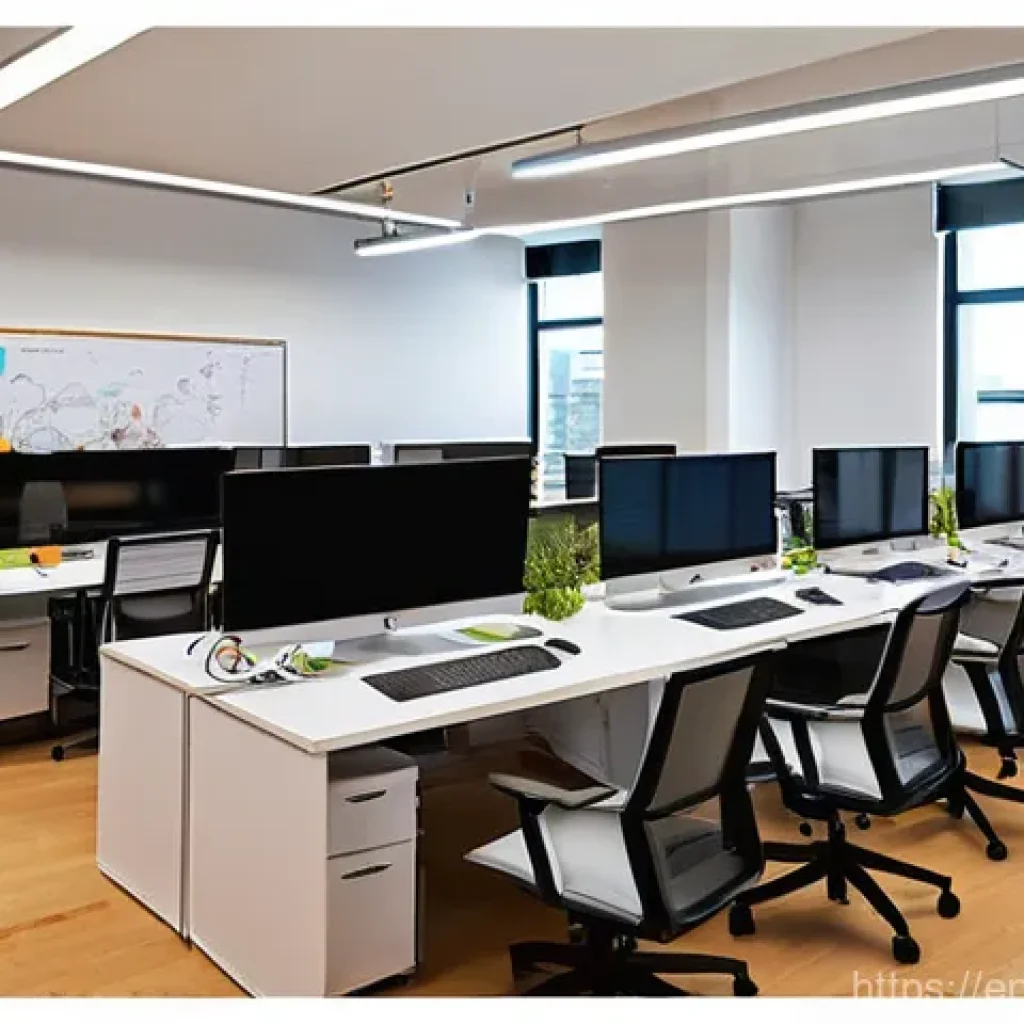The world of animation planning is a whirlwind, isn’t it? One minute you’re pitching a groundbreaking series, the next you’re wrangling budgets and deadlines that seem to shrink by the hour.
Staying ahead in this incredibly fast-paced, creatively demanding industry, especially with new tech like AI constantly shifting the landscape and global competition heating up, often feels like a superhuman feat.
But what if I told you that some of the most powerful tools for success aren’t found in a software update or a new animation technique, but within the pages of a book?
I’ve personally discovered that the right self-development reads can be absolute game-changers, not just for your career progression, but for cultivating the resilient mindset needed to innovate, lead your team effectively, and foster a truly creative environment.
Ready to transform your approach and elevate your studio to new heights? Let’s dive in and uncover the literary gems that will do just that.
It’s incredible how a few well-chosen books can completely reshape your perspective, isn’t it? As someone who’s spent years immersed in the often chaotic yet endlessly rewarding world of animation studio planning, I’ve come to rely not just on technical skills or industry contacts, but on a robust personal toolkit fueled by powerful insights from self-development literature.
It’s like having a silent mentor, guiding you through the toughest decisions and helping you unlock that next level of creative leadership. I mean, we’re always pushing boundaries with visuals and storytelling, so why wouldn’t we apply that same drive for innovation to how we run our studios and develop ourselves?
I’ve personally seen how a shift in mindset, sparked by the right book, can not only streamline production and boost team morale, but also directly impact a studio’s bottom line by fostering a more engaged and productive environment.
This isn’t just about theory; it’s about practical, actionable wisdom that transforms how you lead, create, and succeed.
Elevating Your Leadership Through Empathy and Vision

Leading an animation studio isn’t just about managing schedules and budgets; it’s about steering a ship full of wildly imaginative, incredibly talented individuals towards a shared vision. I’ve learned, sometimes the hard way, that true leadership isn’t about barking orders from the top, but about fostering an environment where every voice feels heard and valued. It’s about being a conductor, not a dictator, ensuring each instrument plays its part beautifully. Books focused on empathetic leadership have been absolute game-changers for me, helping me understand that really connecting with my team on a human level unlocks their full potential in ways I never imagined. It translates directly into higher engagement, reduced turnover – which is huge in our industry – and ultimately, a more vibrant creative output that keeps audiences captivated and wanting more. When your team trusts you, their creativity flourishes, and that’s priceless.
Cultivating an Empowered Creative Culture
There’s this magic that happens when a creative team truly feels empowered. I remember a phase in my career where things felt a bit stagnant, and I realized I was unintentionally micro-managing. After diving into some fantastic reads on servant leadership, I started shifting my approach, giving my animators more autonomy and ownership over their work. The change was almost immediate. Suddenly, they weren’t just executing tasks; they were *investing* themselves, bringing fresh ideas and solutions to the table that elevated our projects to new heights. It wasn’t about me having all the answers, but about creating a space where *everyone* could find and share theirs. This kind of culture doesn’t just feel good; it’s a strategic advantage, making your studio a magnet for top talent and a beacon of innovation. It ensures a consistent flow of fresh perspectives, which is absolutely vital for staying competitive in a rapidly evolving market like animation. It also means projects move faster and more efficiently because people are intrinsically motivated, not just deadline-driven.
The Empathy-Driven Approach to Conflict Resolution
Let’s be real, creative differences are inevitable in a studio. They’re part of the process, and sometimes, they can escalate into genuine conflicts. I used to dread these moments, feeling like I had to “fix” everything. But then I started exploring books on emotional intelligence and non-violent communication, and it completely changed my perspective. Now, instead of jumping in to solve the problem, I focus on truly *listening* to each side, understanding the underlying emotions and needs. It’s not about who’s right or wrong, but about finding common ground and fostering mutual respect. I’ve found that when people feel understood, even if their initial idea isn’t chosen, they’re far more likely to collaborate constructively on the next steps. This approach saves countless hours of tension and rework, ensuring that creative disagreements become catalysts for better solutions, rather than roadblocks. This kind of mindful conflict resolution builds a stronger, more resilient team that can weather any storm together.
| Leadership Focus Area | Key Self-Development Benefit | Impact on Animation Studio |
|---|---|---|
| Empathetic Leadership | Improved team morale, stronger collaboration | Higher quality output, reduced turnover, attracting top talent |
| Strategic Foresight | Proactive problem-solving, market adaptability | Sustainable growth, competitive edge, innovative project selection |
| Personal Productivity | Enhanced focus, reduced burnout | Efficient project management, consistent creative flow, better work-life balance for leaders |
| Negotiation Skills | Securing favorable deals, fostering partnerships | Increased project funding, stronger client relationships, intellectual property protection |
| Innovative Mindset | Embracing new technologies, continuous improvement | Cutting-edge animation techniques, industry leadership, adaptability to AI advancements |
Strategic Thinking Beyond the Storyboard
When you’re deeply entrenched in the creative process, it’s easy to forget that an animation studio is, at its core, a business. For years, I was so focused on the artistry that the ‘business’ side felt like a necessary evil. But as my studio grew, I realized that ignoring strategic financial planning and market analysis was akin to animating a fantastic story without a solid script – it might look great, but it won’t hold up. Picking up some really insightful books on business strategy and financial literacy, tailored for creative enterprises, was a lightbulb moment for me. They taught me how to view our creative endeavors through a commercial lens without stifling the art. This shift in thinking has been instrumental in securing funding, making smarter investment decisions, and ultimately, ensuring the long-term viability of our passion projects. It’s not about selling out; it’s about being smart enough to keep doing what you love, sustainably. After all, a masterpiece doesn’t just need a brilliant artist; it needs a well-resourced studio to bring it to life.
From Concept to Commercial Success: A Business Mindset
One of the biggest hurdles I faced, and I bet many creative leaders can relate, was bridging the gap between a brilliant artistic concept and a commercially viable product. It felt like two different languages! I remember a time when we poured months into a short film, only to realize too late that its target audience was too niche for broad distribution, leading to a financial shortfall. That experience pushed me to seek out resources that taught me how to think like an entrepreneur, not just an artist. Books discussing market analysis, intellectual property, and revenue diversification helped me understand that commercial success isn’t about compromising artistic integrity, but about understanding the ecosystem our art exists within. Now, we integrate market considerations from the very early stages of development, ensuring our creative concepts have a clear path to profitability without losing their soul. This proactive approach saves time, resources, and a lot of heartache in the long run, and it makes our pitches to investors incredibly compelling because we’ve already done the homework.
Navigating Market Trends and Future-Proofing Your Studio
The animation industry is a beast, constantly evolving with new technologies, distribution platforms, and audience demands. Staying ahead, or even just keeping pace, can feel like a full-time job in itself. I used to spend hours just trying to keep up with industry news, feeling overwhelmed by the sheer volume of information. Strategic thinking books, particularly those focusing on foresight and trend analysis, provided me with frameworks to cut through the noise. They helped me develop a more disciplined approach to identifying emerging trends—like the rise of generative AI in animation pipelines or the shift towards interactive storytelling—and understanding their potential impact on our studio. Instead of reacting to changes, we’re now much better at anticipating them and adapting our strategies, whether that means investing in new software, retraining our team, or exploring new creative ventures. This forward-looking mindset isn’t just about survival; it’s about positioning our studio as a leader and innovator, ensuring we’re always ready for whatever the future holds. It gives us the confidence to take calculated risks and explore uncharted creative territories, knowing we’ve done our due diligence.
Boosting Personal Productivity and Creative Flow
Let’s be honest, the life of an animation studio leader can be relentless. I’ve had more than my fair share of late nights, fueled by caffeine and an endless to-do list, feeling like I was constantly juggling flaming torches. It’s easy to fall into the trap of thinking that working harder means working better, but I quickly learned that burnout is a real threat, not just to me but to the entire creative engine of the studio. That’s when I seriously started exploring books on personal productivity and maintaining creative flow. It wasn’t about finding more hours in the day, but about working smarter, protecting my mental energy, and creating systems that supported consistent, high-quality output. Implementing some of these strategies—like dedicated deep work blocks or even just a more structured approach to email—has been revolutionary. It’s given me back precious time for strategic thinking and, crucially, for my own creative well-being, which directly translates into a more focused and inspiring leader for my team. When I’m firing on all cylinders, the whole studio feels it.
Taming the Digital Deluge: Focus in a Distracted World
I don’t know about you, but sometimes it feels like my inbox and Slack notifications are conspiring against my sanity. In our hyper-connected world, deep, focused work, which is essential for creative leadership and strategic planning, can feel almost impossible to achieve. There was a period when I felt constantly pulled in a dozen directions, my attention fragmented, and my creative output suffering. Books on digital minimalism and focused work helped me reclaim my time and attention. I started implementing strategies like turning off notifications during specific hours, scheduling “no-meeting” days, and creating dedicated spaces for concentrated tasks. It sounds simple, but the impact has been profound. I’ve found I can think more clearly, make better decisions, and actually *enjoy* the problem-solving process again. This improved focus isn’t just a personal win; it means I’m a more present and effective leader, able to give my full attention to complex animation challenges and guide my team with greater clarity. It’s about consciously building an environment that prioritizes deep work over constant reactivity, allowing true innovation to emerge.
Sustaining Creative Energy and Preventing Burnout
The animation industry thrives on passion, but passion can only take you so far if you’re constantly running on empty. I’ve seen too many brilliant artists and leaders burn out, and it’s a heartbreaking loss for everyone. For a long time, I thought pushing through exhaustion was a sign of dedication. But the truth is, sustained creativity demands sustained energy, and that means prioritizing rest, mindfulness, and even play. Books discussing self-care for creatives and the psychology of flow states completely changed my approach. I learned the importance of “artist dates” (a concept I absolutely love!), taking proper breaks, and even incorporating small moments of creative exploration into my daily routine that aren’t tied to a specific project. This isn’t selfish; it’s essential. When I’m recharged, my ideas are fresher, my problem-solving skills are sharper, and my capacity to support my team is vastly improved. Preventing burnout isn’t just about individual well-being; it’s a critical strategy for maintaining a high-performing, innovative studio that can tackle ambitious projects year after year. It means we avoid costly project delays and maintain a positive, healthy work environment for everyone.
The Art of Negotiation and Securing Your Vision
In the animation world, having a brilliant vision is only half the battle. The other half is convincing others to believe in it, fund it, and help you bring it to life. I used to view negotiations as a daunting, almost adversarial process—a win-lose game. My early experiences often left me feeling either depleted or like I’d left something on the table. But then I delved into some incredible literature on negotiation and persuasive communication. What I discovered fundamentally shifted my perspective: true negotiation isn’t about overpowering the other side; it’s about understanding their needs and finding mutually beneficial solutions. It’s about building bridges, not burning them. This newfound understanding has transformed how I approach everything from pitching a new series to a network, securing co-production deals, or even discussing terms with voice actors and artists. It’s helped me forge stronger, more sustainable partnerships, leading to better project outcomes and a more robust network for future endeavors. When you can articulate your vision with confidence and clarity, while also showing genuine respect for your partners, opportunities seem to multiply.
Crafting Win-Win Partnerships
Every animation project, especially large-scale ones, is a tapestry woven from multiple talents, studios, and financial backers. Building effective partnerships is absolutely crucial. I remember struggling to align expectations with a co-production studio early in my career, leading to friction and delays. It was a tough lesson. Since then, books on collaborative negotiation and relationship building have become my secret weapon. They taught me that the goal isn’t just to get a deal done, but to build a foundation for ongoing, successful collaboration. This means investing time upfront to understand a partner’s objectives, their challenges, and how our respective strengths can create something far greater together. It’s about transparency, shared risk, and shared reward. When you approach partnerships with a genuine “win-win” mindset, the energy shifts, and you find creative solutions to problems that might otherwise seem insurmountable. This approach has led to more fruitful relationships, better project outcomes, and a reputation for being a reliable and fair collaborator—qualities that are invaluable for long-term studio success and attracting future opportunities.
Pitching with Persuasion and Conviction
You can have the most groundbreaking animation concept in the world, but if you can’t articulate it compellingly, it might never see the light of day. I’ve sat through countless pitches, both as the one pitching and the one being pitched to, and I can tell you there’s an art to it. Early on, my pitches were often too focused on the technical brilliance or the intricate plot, sometimes losing the emotional core. Books on storytelling, rhetoric, and persuasive speaking taught me to craft narratives that resonate, to connect with an audience on an emotional level before diving into the details. It’s not about being manipulative; it’s about clearly conveying the passion and potential of your project in a way that truly excites and inspires. I’ve learned to strip away jargon, focus on the ‘why’ behind the project, and present a clear vision of its impact and market appeal. The feeling of seeing an investor’s eyes light up, or a network executive lean forward, genuinely captivated by a story I’m telling, is incredibly rewarding. It means our ideas aren’t just good; they’re *understood* and *desired*, paving the way for crucial funding and distribution deals.
Embracing Innovation and Adapting to Change

The animation industry is a continuous motion picture of change. Blink, and you might miss a new software, a groundbreaking technique, or a shift in audience consumption habits. I’ve seen studios that clung to old ways slowly fade, and others that embraced change not just survive, but truly thrive. For me, staying current isn’t just a professional obligation; it’s a personal fascination. Books that explore innovation, future trends, and adaptive strategies have been like my personal crystal ball, helping me understand the landscape and anticipate shifts rather than just reacting to them. It’s about cultivating a mindset where change isn’t a threat, but an exciting opportunity to explore new creative territories and refine our craft. This proactive approach to innovation not only keeps our studio relevant but also incredibly exciting for our artists, who are always eager to push boundaries. When we embrace new ideas, we’re not just building better animation; we’re building a more resilient, dynamic, and ultimately more successful studio.
Future-Proofing Your Studio in the AI Era
Let’s talk about the elephant in the room: AI. It’s no longer a futuristic concept; it’s here, and it’s rapidly reshaping creative industries, including animation. I’ve spent considerable time researching and experimenting with how AI tools can be integrated into our workflow, and let me tell you, it’s a double-edged sword that requires careful navigation. Books and articles on technological disruption and the ethics of AI in creative fields have been invaluable. They’ve helped me move past the initial fear and understand how to strategically leverage AI for tasks like storyboarding assistance, character design iterations, or even optimizing rendering pipelines, rather than letting it displace human creativity. It’s about empowering our artists with new tools, not replacing them. This means investing in training, fostering a culture of experimentation with new technologies, and always prioritizing the unique human touch that makes animation truly special. Embracing AI thoughtfully is how we stay at the forefront of the industry, creating more efficient pipelines and opening up entirely new creative possibilities for our team.
Cultivating a Growth Mindset for Constant Evolution
I genuinely believe that the most valuable asset a leader—and a studio—can possess isn’t talent or resources alone, but a relentless “growth mindset.” There have been countless times when a project hit a seemingly insurmountable snag, or a new technology emerged that felt completely overwhelming. In those moments, it’s easy to retreat into what’s familiar. But books on mindset and resilience taught me that challenges aren’t failures; they’re opportunities for learning and growth. I actively encourage my team to view setbacks as feedback, to embrace continuous learning, and to never stop asking “what if?” This isn’t just fluffy motivational talk; it’s a practical strategy for innovation. When everyone in the studio believes they can develop new skills, overcome obstacles, and adapt to changing demands, our collective problem-solving capacity skyrockets. It creates a dynamic environment where experimentation is celebrated, mistakes are learned from quickly, and the entire studio evolves together, pushing the boundaries of what’s possible in animation. This kind of culture is what allows us to tackle increasingly complex and ambitious projects with confidence.
Building a Resilient Studio Culture
The creative process, as beautiful as it is, can also be incredibly demanding. Deadlines loom, artistic differences arise, and the pressure to innovate is constant. I’ve personally experienced the toll this can take, and I’ve witnessed talented individuals burn out or leave the industry entirely. This led me to a profound realization: building a truly resilient studio isn’t just about robust project management; it’s about cultivating a culture that prioritizes the well-being and psychological safety of every single team member. It’s about creating a space where people feel safe enough to be vulnerable, to make mistakes, and to ask for help without fear of judgment. Books on organizational psychology, workplace wellness, and psychological safety have provided me with invaluable insights and practical strategies. Implementing these principles has led to a more supportive, cohesive, and ultimately, more productive environment. When your team feels genuinely supported and cared for, they’re not just employees; they’re invested partners who bring their best selves to every project, rain or shine. This creates a sustainable creative ecosystem that can withstand the inevitable stresses of the industry.
Prioritizing Mental Well-being in High-Pressure Environments
In our industry, the line between passion and obsession can blur, and the fast pace of animation production often means long hours and intense creative demands. For a long time, I think many of us, myself included, saw “mental health” as a personal issue, separate from work. But I’ve come to understand that it’s deeply intertwined with performance and creativity. After reading compelling research and personal accounts in books focusing on workplace well-being and stress management, I realized I had a responsibility as a leader to actively champion mental health. This meant not just acknowledging it, but creating tangible support systems: encouraging flexible working arrangements, promoting regular breaks, destigmatizing conversations around stress and anxiety, and even exploring resources like mindfulness training for the team. It’s a continuous effort, but the positive impact has been undeniable. My team members report feeling more balanced, less stressed, and more equipped to handle the demands of challenging projects. A mentally healthy team is a more creative, resilient, and focused team—and that’s a huge win for any animation studio, translating directly into better work and fewer costly setbacks.
Fostering Open Communication and Psychological Safety
There’s nothing more damaging to a creative team than a climate of fear or silence. I’ve learned that truly innovative ideas rarely flourish in an environment where people are afraid to speak up, challenge assumptions, or admit a mistake. For a while, I struggled with getting honest feedback, feeling like people were just telling me what they thought I wanted to hear. Delving into books on team dynamics and psychological safety opened my eyes to the power of genuinely open communication. I’ve actively worked to create a culture where it’s okay to fail, where dissenting opinions are not just tolerated but encouraged, and where every team member feels safe to contribute their thoughts, no matter how unconventional. This means practicing active listening, admitting my own vulnerabilities as a leader, and creating clear channels for feedback that are free from judgment. The results have been transformative: our brainstorming sessions are more dynamic, our problem-solving is more robust, and our team cohesion is stronger than ever. When your team feels safe, they take creative risks, and those risks often lead to the most extraordinary animation. This fosters an authentic, transparent working relationship that enhances overall project quality and speed.
Financial Acumen for Creative Visionaries
Okay, let’s talk brass tacks: money. As creative as we are, animation studios are businesses, and without a solid financial foundation, even the most brilliant artistic visions can falter. For far too long, I approached finances with a mix of dread and hopeful ignorance, relying heavily on my accountant but not truly understanding the underlying principles myself. It felt like a necessary but uninspired chore. However, once I started immersing myself in books on financial literacy and business management specifically geared towards creative industries, everything clicked. I realized that understanding budgets, cash flow, and investment strategies wasn’t stifling my creativity; it was *empowering* it. It gave me the confidence to negotiate better deals, allocate resources more effectively, and plan for sustainable growth. It’s transformed me from someone who just hopes the numbers work out to someone who actively shapes our financial future, ensuring our artistic endeavors are always well-supported. Being financially savvy doesn’t just keep the lights on; it fuels our ability to take bigger, bolder creative risks.
Decoding Budgets and Maximizing Resources
Budgets, for many creatives, can feel like a straitjacket. I certainly felt that way in my early days, viewing them as restrictive rather than enabling. I vividly recall a project where we severely underestimated post-production costs, leading to a scramble for funds and immense stress. That experience was a wake-up call, pushing me to really dig into books that demystify financial planning. I learned that a budget isn’t just a list of expenses; it’s a strategic roadmap for how you invest in your vision. Now, I approach budgeting with a more proactive mindset, focusing on maximizing every dollar to support our creative goals. This means not just tracking expenses, but understanding cost-benefit analyses for software, talent, and marketing, and seeking out efficiencies without compromising quality. It’s about being a shrewd steward of resources, ensuring that we’re not just spending money, but strategically deploying it to achieve the greatest creative and commercial impact. This deeper understanding has allowed us to take on more ambitious projects with greater confidence, knowing our financial house is in order.
Strategic Funding and Investment for Growth
Growth is a funny thing in the creative world; you want it, but you also want to maintain your artistic integrity and unique studio culture. For years, I was wary of external funding, fearing it would dilute our vision. But I quickly learned that smart investment is often the key to scaling up, attracting top-tier talent, and taking on those truly game-changing projects. Books on venture capital, angel investing, and strategic partnerships, particularly for creative businesses, became my guide. They taught me how to articulate our studio’s value proposition beyond just our creative output, demonstrating our market potential and long-term financial viability to potential investors. It’s not just about asking for money; it’s about presenting a compelling future. I’ve found that when you can speak confidently about ROI and strategic growth, investors are much more likely to see your studio not just as an art house, but as a robust business. This understanding has allowed us to secure significant investments, expand our team, and explore new technological frontiers, all while staying true to our core creative mission. It’s about smart growth that enhances, rather than compromises, our artistic freedom.
Wrapping Up
It’s truly exhilarating to reflect on how a consistent commitment to personal growth can profoundly transform not just our individual leadership journeys, but the very fabric of our animation studios.
What started for me as a series of hesitant steps into self-development literature has blossomed into an unwavering belief that the best leaders are always students, always evolving.
Remember, it’s not about finding a magic bullet, but about consistently investing in yourself, understanding that your personal growth is the most powerful catalyst for your studio’s innovation, resilience, and ultimate success.
The animation world is ever-changing, and our ability to adapt, empathize, and strategically plan hinges entirely on how well we nurture our own minds and spirits.
Useful Insights for Your Journey
1. Embrace Empathetic Leadership: Connect deeply with your team; it fosters trust, boosts morale, and unlocks their full creative potential, leading to higher quality work and reduced turnover.
2. Strategize Beyond the Art: Integrate business acumen into your creative process from the start. Understanding finance, market trends, and negotiation is crucial for securing funding, sustainable growth, and making your artistic vision a commercial reality.
3. Prioritize Personal Well-being: Leadership in a high-pressure industry demands self-care. Implement productivity strategies, guard against burnout, and cultivate a growth mindset to ensure sustained creative energy and effective decision-making.
4. Innovate Continuously: Stay curious about new technologies, including AI. View change as an opportunity to refine your craft, streamline workflows, and explore new creative territories, positioning your studio at the industry’s forefront.
5. Build Resilient Culture: Foster psychological safety and open communication within your studio. A supportive environment where team members feel safe to take risks and learn from mistakes is vital for problem-solving, team cohesion, and long-term success.
Key Takeaways
Leading a thriving animation studio in today’s dynamic landscape isn’t solely about artistic genius; it’s a multifaceted endeavor that demands continuous personal and professional development.
By consciously cultivating empathetic leadership, shrewd financial acumen, unwavering personal resilience, a thirst for innovation, and a supportive studio culture, you empower yourself and your team to navigate challenges, seize opportunities, and consistently bring groundbreaking stories to life.
It’s about being an architect of both art and enterprise, ensuring your creative vision has a sustainable, inspiring home.
Frequently Asked Questions (FAQ) 📖
Q: Okay, I get it, self-development books. But seriously, how can a book really help me deal with the breakneck speed of technological advancements, like
A: I, constantly disrupting the animation world? A1: Oh, believe me, I hear you! It feels like you buy a new piece of software, and by the time you’ve mastered it, a whole new paradigm shift like AI is knocking on your door, right?
I’ve personally discovered that it’s not about finding a book that tells you exactly how to code the next AI tool – that’s a moving target! Instead, it’s about cultivating the mindset to navigate that constant change.
Think about it: books like “Grit” by Angela Duckworth aren’t about tech; they’re about perseverance and passion, which are absolutely crucial when you’re trying to integrate new, complex tools into your pipeline and your team is feeling the strain.
I’ve noticed that the real game-changer is how these books empower you to become a more adaptable leader and a more resilient individual. They help you develop the strategic thinking to anticipate trends, not just react to them.
For example, reading about systems thinking helps you understand how a new AI tool might impact your entire production workflow, from pre-production to rendering.
It’s about building your internal operating system so you can update and evolve your studio’s processes without getting completely derailed. When you’ve got that inner strength and clarity, leading your team through the next big tech wave feels less like a struggle and more like an exciting challenge.
It gives you the confidence to experiment, fail fast, and iterate, which is essentially the core of innovation in any tech-driven field.
Q: My studio often struggles with creative blocks and, honestly, sometimes just getting everyone on the same page. What kind of self-development books do you genuinely think can boost creativity and improve team cohesion in a demanding animation environment?
A: That’s such a common pain point, isn’t it? The animation world thrives on creativity, but it can also be incredibly taxing, leading to burnout and those dreaded creative blocks.
And then there’s the whole dance of getting a diverse group of artistic minds to collaborate seamlessly! What I’ve personally found invaluable are books that touch on psychology, not just business.
For fostering creativity, “The Artist’s Way” by Julia Cameron, while seemingly a classic, offers practical exercises that can genuinely reignite that spark.
It encourages you to step away from the screen, to play, to refill your creative well – something we often forget in the mad dash of production. For team cohesion, I lean heavily on insights from books focused on human connection and effective communication.
Think about “Crucial Conversations” or “Radical Candor.” These aren’t about “how to make a better animated character,” but about “how to have honest, productive conversations when the stakes are high” or “how to challenge directly while caring personally.” I’ve seen firsthand how applying these principles can transform a tense review meeting into a constructive dialogue.
When you establish psychological safety within your team, where people feel safe to share half-baked ideas, admit mistakes, and offer candid feedback without fear of judgment, that’s when truly innovative and collaborative projects take flight.
It’s about building a culture where everyone feels valued and understood, which in turn fuels both individual creativity and collective success.
Q: With fierce global competition and shrinking budgets, how can simply reading books help my animation studio become more financially viable and competitive? It feels like we need more practical, immediate solutions.
A: I totally get why you’d think that! When you’re staring down budget constraints and a rapidly expanding global market, “reading a book” might sound a bit… academic, right?
But here’s the thing I’ve learned from navigating these waters myself: the most enduring, practical solutions often come from a deeper understanding of strategy, leadership, and human behavior – exactly what these books provide.
For financial viability and competitiveness, it’s less about a single “magic bullet” book and more about a combination of insights that strengthen your overall business acumen and strategic foresight.
For example, delving into books on lean methodologies or agile project management, even if they aren’t explicitly about animation, can give you powerful frameworks to optimize your pipeline, reduce waste, and deliver projects more efficiently.
I’ve personally applied principles from “The Lean Startup” to our early-stage project development, and it significantly helped us test ideas without over-investing time and resources.
Furthermore, competition isn’t just about output; it’s about attracting and retaining top talent, understanding market trends, and building a brand that resonates.
Books on marketing, negotiation, and even behavioral economics can give you an edge. Think about “Influence: The Psychology of Persuasion” – understanding how to influence and persuade, whether it’s clients, investors, or your own team, is incredibly powerful.
It helps you articulate the value of your studio, negotiate better deals, and foster a loyal client base. Ultimately, these reads equip you with the strategic toolkit to make smarter decisions, cultivate a resilient and innovative studio culture, and position yourself strongly in a crowded marketplace, which absolutely translates to better financial health and sustained competitiveness.






